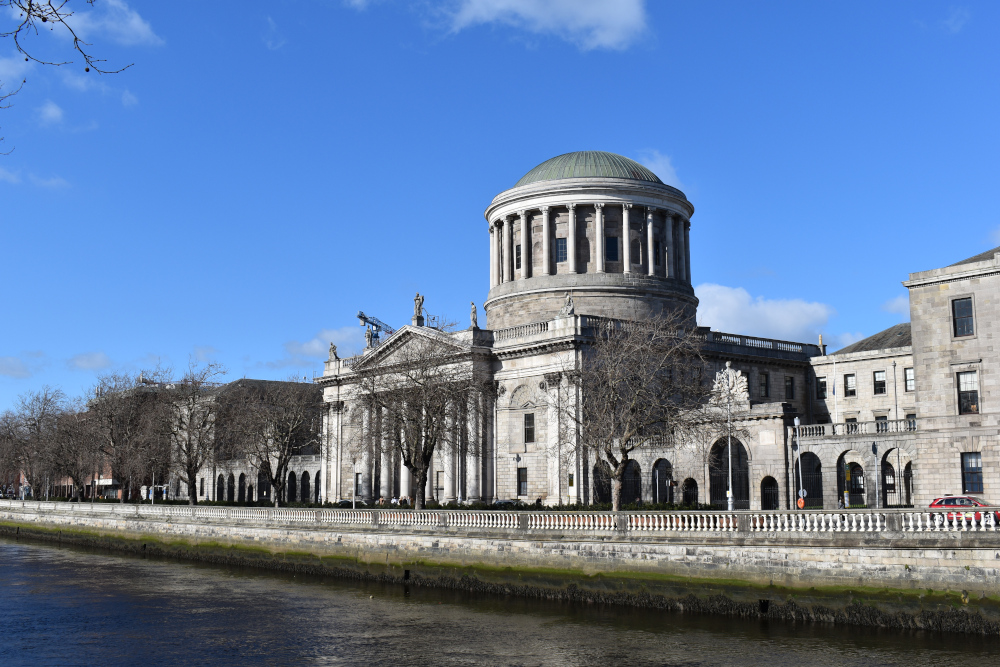High Court: Exemplary damages awarded where receivership continued despite strong evidence of forged signature on mortgage documents

The High Court has determined that a woman’s signature was forged on mortgage documents purporting to charge her Wexford holiday home of which she was the sole owner, and that the evidence of her handwriting expert was uncontroverted by the defendants.

About this case:
- Citation:[2023] IEHC 741
- Judgment:
- Court:High Court
- Judge:Mr Justice Mark Heslin
Delivering judgment for the High Court, Mr Justice Mark Heslin stated that “this Court must mark its disapproval of the conduct of the Defendants. At all material times, from at least October 2019, they were in receipt of expert evidence that the respondent was not the author of the signature on the mortgage. This was also averred to by the Plaintiff. By contrast, the Defendants never proffered any contrary view by a handwriting expert, moreover they relied on averments by a solicitor who had no recollection whatsoever of seeing the Plaintiff sign anything…”
Background
The proceedings arose from the plaintiff’s purported signature on three mortgage documents relating to her Wexford holiday home, of which she was the sole owner. The plaintiff contended that she never signed the documents which purported to charge the property to which she was emotionally attached due to its ties to multiple generations of her family.
The defendants defended the claim on the basis that no fraud had occurred — the plaintiff and her husband had executed the documents by way of their solicitors at the time, and as the mortgage was registered with the Land Registry/Property Registration Authority, they were entitled to rely on the charge now appearing in the property’s folio.
The plaintiff applied for an interim injunction in October 2019 restraining the defendants from advertising or attempting to sell her Wexford holiday home, which was granted on 31 October 2019.
On 17 June 2022, the Circuit Court granted an interlocutory injunction restraining the defendants from selling or advertising the property pending trial, and ordering that the maintenance and management of the property be left to the defendants. A de novo appeal came before the High Court.
The High Court
Mr Justice Heslin noted with surprise that whilst a declaration pursuant to the Family Home Protection Act 1976 had been signed by a commissioner for oaths/practising solicitor, even on the defendants’ account they had completed the declaration without the plaintiff being present. The judge found that “nothing was declared before a Commissioner for Oaths/Practicing Solicitor on the 22 March 2004”.
The court considered that whilst the evidence of a handwriting expert was entirely supportive of the plaintiff’s position, the facts established in relation to the property’s ties to her family and the fact that the plaintiff was sole owner were also supportive with the evidence of the plaintiff that she had not signed the documents.
Examining a client retainer and authority document, the court highlighted that the plaintiff’s signature appeared in the “witness” section rather than the “client” section where her husband’s signature was located, remarking that “when a client is in a solicitor’s office to sign a document, the solicitor will ensure that they do not sign in the wrong place… The objective fact that the Plaintiff’s signature appears in the wrong place seems to me to be inconsistent with the document having been signed by the Plaintiff in front of a solicitor who witnessed her signature at that time.”
Having viewed a 2004 credit agreement, the court was satisfied that whilst the plaintiff had admittedly signed the agreement with the understanding that it formed part of an application only, handwritten details had been filled in later which were not present at the time that she signed the agreement. The court also accepted that the plaintiff’s signature had been forged on a 2008 credit agreement.
Whilst Mr Justice Heslin accepted that the plaintiff’s then-solicitor was sincere in his evidence, the judge considered that he was “sincerely mistaken” in his view that the plaintiff signed the mortgage at a meeting with himself and her husband and was also mistaken in his view that he witnessed her signature on the mortgage.
Considering that the standard to be met by the plaintiff to show that fraud had occurred on the balance of probabilities, and not the higher standard contended for by the defendants, the court made a finding of fact that the plaintiff’s signature did not appear on the mortgage and was a forgery.
In relation to the defendants’ reliance on the conclusiveness of the register pursuant to ss.30 and 31 of the Registration of Title Act 1964 and the contention that as a ‘purchaser for value’ the first named defendant was not required to look behind the conclusiveness of the register, Mr Justice Heslin emphasised that the mortgage was a fraudulent instrument and that nowhere in their defence had the defendants pleaded that the first named defendant was a purchaser for value without notice of the fraud.
The court also expressed that the defendants’ submission that “the conclusiveness of the Register trumps the Plaintiff’s right to ownership free of the burden” suggests that the court “should ignore (i) the words ‘in the absence of actual fraud’ which appear in s. 31 of the 1964 Act; and should also ignore (ii) that s. 31 explicitly provides that ‘…nothing in this Act shall interfere with the jurisdiction of any Court of competent jurisdiction based on the ground of actual fraud or mistake…’”.
The court also rejected the defendants’ contention that the only inference to be drawn by the failure of the plaintiff to name her husband as a defendant or to call him as a witness was that her husband would not give evidence supportive of her case.
Conclusion
Accordingly, the court determined that the plaintiff had an entitlement to have the register rectified.
The court also determined that the plaintiff was entitled to damages, including exemplary damages, in the sum of €53,000 in circumstances where inter alia the receivership had continued despite having received the expert views of the plaintiff’s handwriting expert in 2019 in the course of the plaintiff’s injunction application, where the defendants failed to maintain the property despite the order of the Circuit Court, and where the plaintiff was deprived of the use of her holiday home.
Madigan v Promontoria (Oyster) DAC & Anor [2023] IEHC 741








